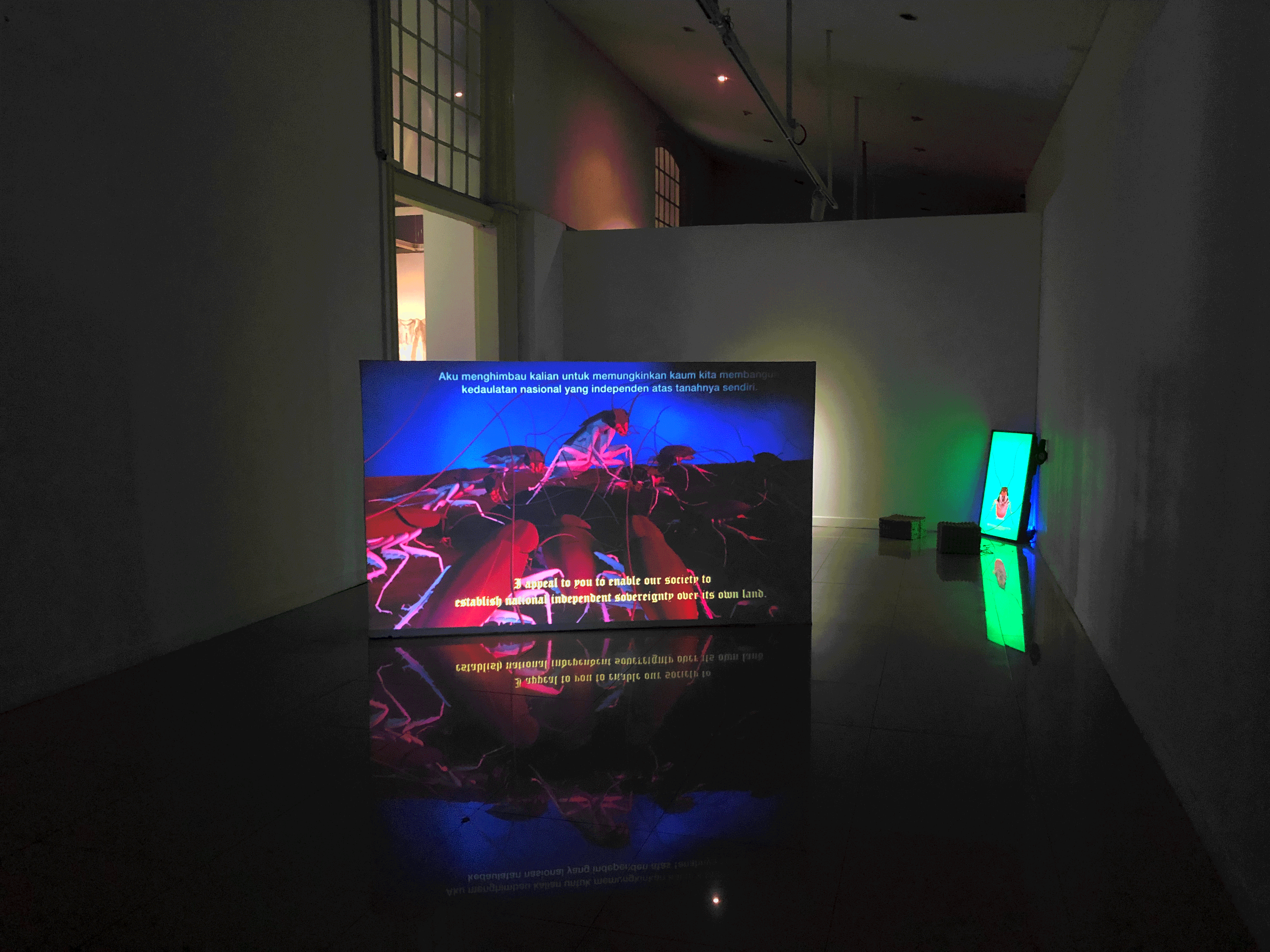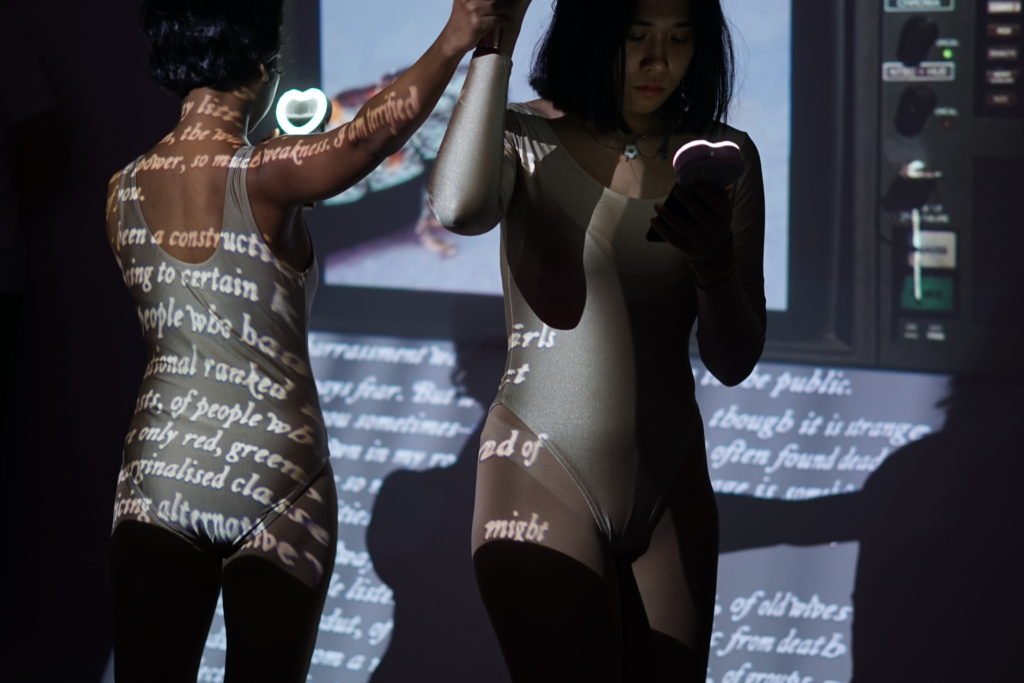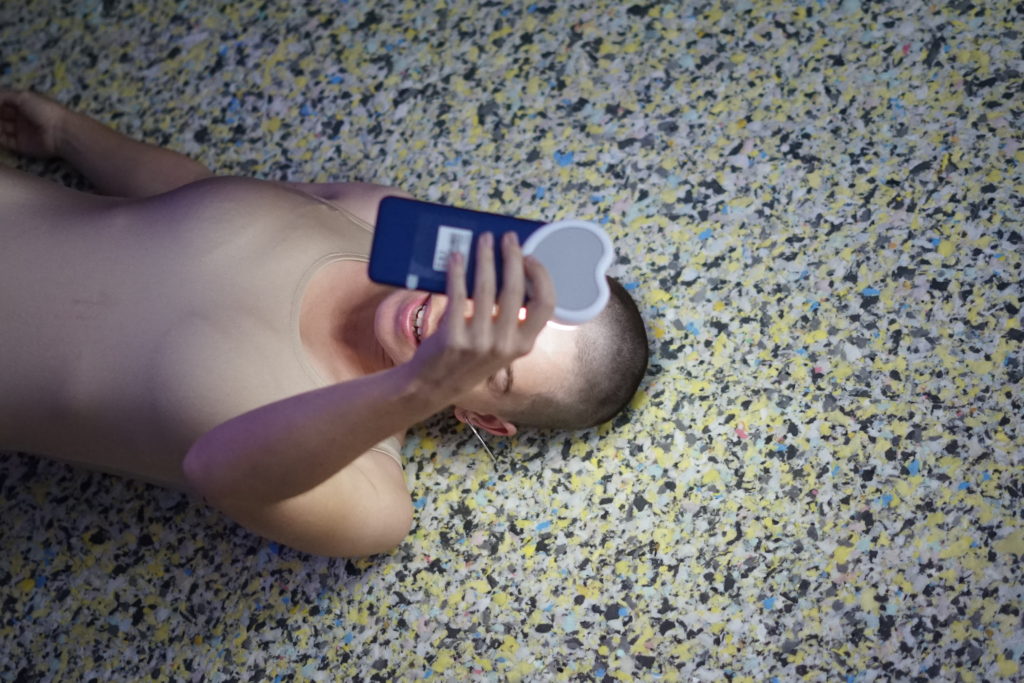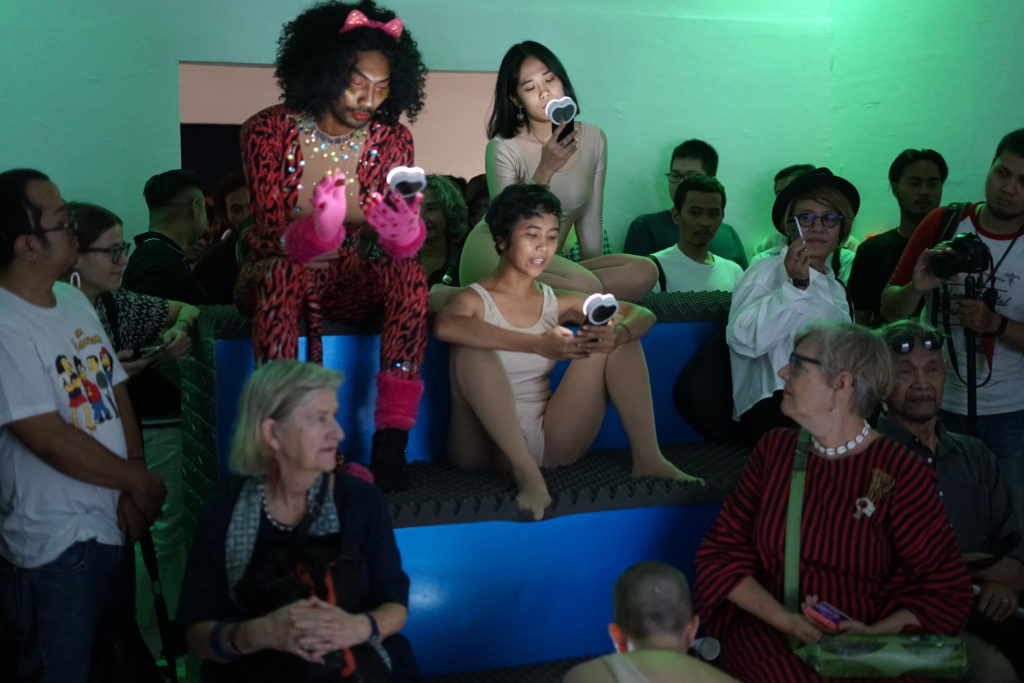PEST TO POWER
Will the future hold its accountability for the human and non-human being to be more sustain?
Who owns the future?Who benefits from the idea of future?.

01
01
Pest To Power (2019) installation at Galeri Nasional Indonesia
02
Link to Schloss-Post
ENGLISH
In this project, I look to the possibility of unlearning human evolution for manufacturing future by gaining knowledge through the agency of cockroaches. What is consider as pest might be a key to lead the sustainable future. Being marginalized for thousand years as a creature carrying diseases and treated as a fear-some species by the human counterpart, cockroaches bear its agency as the only single species that could survive the many extinction events and epochal transformation. Moreover, the judgement toward cockroach is built by the hyper-sterilised semiocapitalism/biopolitics idea of ‘proper lifestyle’ in which overproduction of synthetic commodity and the human dis-attachment to waste generated cockroach as a peripheral creature outside human’s cupola. When everything has to be related to the human activities, the filthy cockroaches are not part of the nature. Human idea to differentiate the nature and culture embraced the notion of speciesism for the cockroach.
This project is a science-quasi-fictional quest into a peculiar behaviour of cockroach that is constituted as an assemblage of nocturnal, habitable, homeopathic, and resourceful material to explore the idea of eco-centric futurism—which means human is not the center for everything. The artistic gesture of this artwork is that of presenting a collection of texts and images in the form of published book for inter-species reciprocity between human and cockroach. This publication will explore the potential of future-developing involving cockroach as a source material. In addition, a video displays the visuality of the research will also be installed as part of the installation. In order to extend the artistic expression of this phenomenon, a reading-performance will be held while implementing the installation space as the cenacle of transferring knowledge. The performance, which consists of human being reading the passage from the publish book while passively interacting with the audience, is an act of mimicking the existence of cockroach—that being somehow ignored but yet menacing. The installation and performance draw on a mode of representation and expression of the immersed image for the complex and fragile interactions and responses between human and cockroach.
What we, human, can learn from the cockroach? What cockroach can learn from human? What is the method of reciprocity for human and nonhuman agency? Could an artistic practice addresses this issue? As the manifesto of Xenofeminism argues, the future is not only for the Child, but it is also a space for nonhuman being. When we start thinking less anthropocentric, we think more ecological. The future is cockroach.

Hama Memberkati Reading Performance at ARTJOG MMXIX

Hama Memberkati Reading Performance at ARTJOG MMXIX

Hama Memberkati / Pest to Power Reading Performance at ARTJOG MMXIX (August 2019)